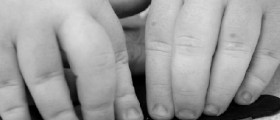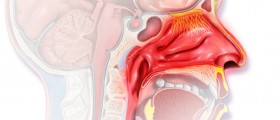
Fever can be classified as undulant, relapsing, sustained, intermittent and remitting. Low fever is 99 to 100.4 degrees, moderate fever is 100.5 to 104 and high fever is over 104 degrees. It can also be classified by its duration so it can be prolonged or brief.
Causes of fever
There are numerous different factors, causes and medical conditions which can be held responsible for the onset of fever. Factitious pyrexia is one of the possible causes. Reaction to drugs such as barbiturates, antibiotics and several other medicaments may also result in fever. Kawasaki’s disease, cerebral hemorrhage, cirrhosis and similar serious medical conditions may be associated with the onset of fever. Various different types of allergic conditions and allergic reactions may be held responsible for triggering fever. Numerous different types of blood disorders and thromboembolic medical problems are almost always associated with fever. Metabolic and endocrine disorders, as well as destruction of different tissues in the human body may also be the causes of fever. Malignancies, connective tissue disorders and a large number of types of inflammatory conditions are also potential causes of fever. Probably the most common causes of fever include numerous different sorts of fungal, viral and bacterial infections. Prolonged fever is a term used for fever which lasts for more than 3 weeks. It can be associated with a large number of medical conditions and other factors which are all mentioned above.
Night sweats
Night sweats are episode of significant sweating during the night which results in soaked bedding and bedclothes. It is one of the most common medical symptoms and it is rather uncomfortable. Contrary to the popular belief it is usually not associated with any serious underlying medical conditions. The most common medical causes of night sweats include night terrors, endometriosis, gastroesophageal reflux disease, alcohol abuse, drug abuse, antipsychotics, antihypertensives, antipyretics, various over the counter medications, nocturnal hypoglycemia, diabetes insipidus, hyperthyroidism, anxiety, menopause and any cause of fever. One needs to measure the temperature by used infrared ear thermometers, oral measurements or other methods. There are also certain extensive tests which need to be conducted in some cases, depending on the symptoms and the cause of the condition. Fever can be treated with certain types of prescribed medicaments, but very high fever requires immediate medical attention. Those who have high fever need to consume plenty of fluids, wear as little clothes as possible and spend time at a room with a comfortable temperature and plenty of fresh air. Antipyretics are commonly used.

















Your thoughts on this
Loading...